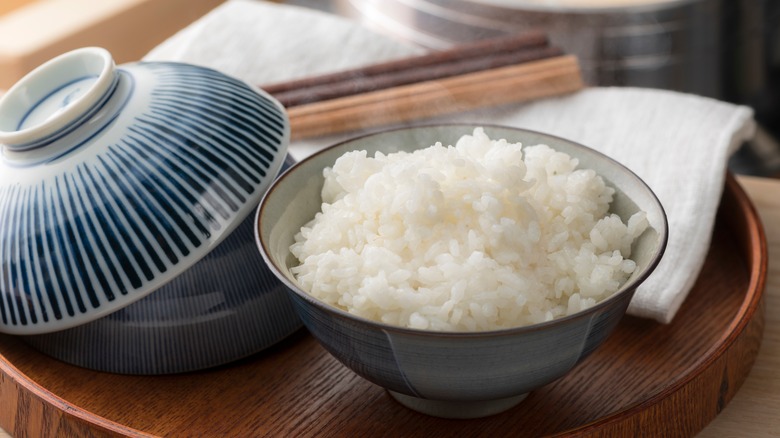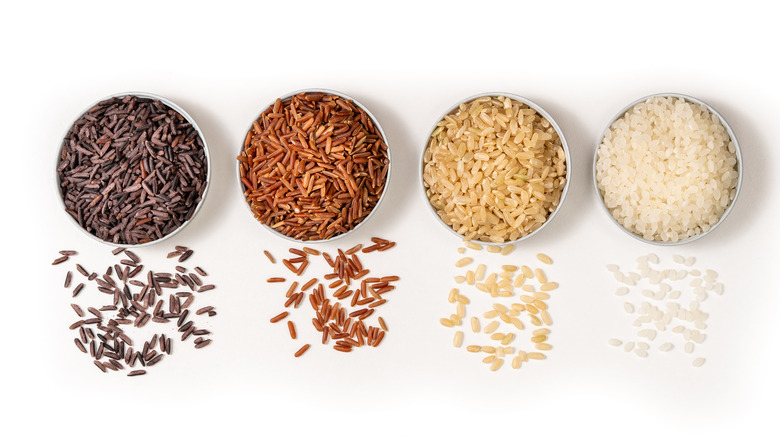Why There May Be Less Rice To Go Around In 2023
Rice production worldwide for 2023 is expected to fall to its lowest level in 20 years, producing a supply deficit and high prices that threaten the food security of millions of people (via CNBC). Two primary reasons account for the shortfall: the war in Ukraine, which has raised grain prices worldwide, and catastrophic rainfall and drought conditions coupled with the searing heat in major rice-producing countries like China and Pakistan.
In addition, CNBC reported in September of 2022 that India, which accounts for 40% of all rice exports worldwide, increased its export tax on some rice varieties by 20%. In an effort to manage high domestic rice prices due to weather-related decreases in production, India also banned the export of broken rice, limiting its overall rice supply destined for other countries and pushing prices higher globally. What's the fallout from this decrease in rice production and the resulting increase in prices?
A decrease in rice production is due to high prices and poor weather conditions
The high cost of rice caused by the production deficit is terrible news for countries that are big importers of rice and rely on it as a staple food, particularly for their poorest populations. Countries like Indonesia, the Philippines, and Malaysia, along with a number of countries in Africa, rely on purchased rice to meet their needs. Rice provides 50% to 80% of the calories for people in the Asia-Pacific region, which accounts for more than 90% of both the world's production and consumption of the staple food, per FAO.
What's the outlook for rice production in the future? While the 2023 rice deficit will certainly cause serious food security problems in countries like Pakistan, Turkey, Syria, and several African countries, which already suffer from significant food price inflation, there's hope for 2024. Market insight analysts from Fitch Solutions told CNBC that pricing and supply should be more balanced for 2023 and 2024, and there may even be a return to a rice surplus for 2024 and 2025, which should push prices lower.

